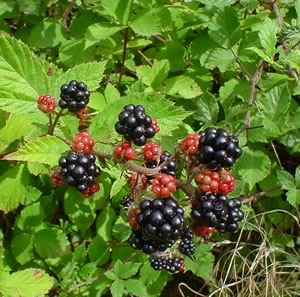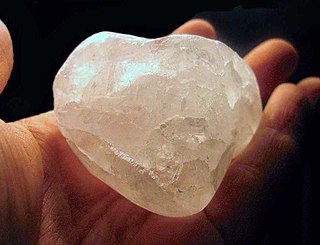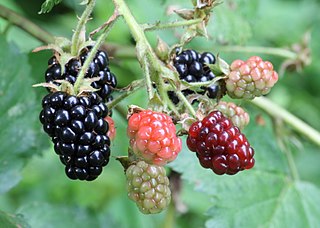
The blackberry is an edible fruit produced by many species in the genus Rubus in the family Rosaceae, hybrids among these species within the subgenus Rubus, and hybrids between the subgenera Rubus and Idaeobatus. The taxonomy of the blackberries has historically been confused because of hybridization and apomixis, so that species have often been grouped together and called species aggregates. For example, the entire subgenus Rubus has been called the Rubus fruticosus aggregate, although the species R. fruticosus is considered a synonym of R. plicatus.

Rubus chamaemorus is a rhizomatous herb native to cool temperate regions, alpine and arctic tundra and boreal forest, producing amber-colored edible fruit similar to the raspberry or blackberry. English common names include cloudberry, nordic berry, bakeapple, knotberry and knoutberry, aqpik or low-bush salmonberry, and averin or evron.

The raspberry is the edible fruit of a multitude of plant species in the genus Rubus of the rose family, most of which are in the subgenus Idaeobatus; the name also applies to these plants themselves. Raspberries are perennial with woody stems.

Rubus idaeus is a red-fruited species of Rubus native to Europe and northern Asia and commonly cultivated in other temperate regions.

Rubus phoenicolasius is an Asian species of raspberry in the rose family, native to China, Japan, and Korea.

Rubus occidentalis is a species of Rubus native to eastern North America. Its common name black raspberry is shared with the closely related western American species Rubus leucodermis. Other names occasionally used include wild black raspberry, black caps, black cap raspberry, thimbleberry, and scotch cap.
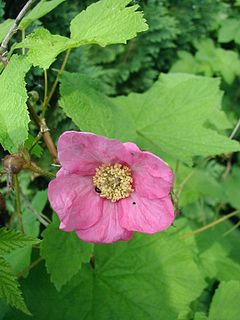
Rubus odoratus, the purple-flowered raspberry, flowering raspberry, or Virginia raspberry, is a species of Rubus, native to eastern North America, from Nova Scotia west to Ontario and Wisconsin, and south along the Appalachian Mountains as far as Georgia and Alabama.

Rubus leucodermis, called white bark raspberry is a species of Rubus native to western North America, from Alaska south as far as California, Arizona, New Mexico, and Chihuahua.

Rubus strigosus, the American red raspberry or American raspberry, is a species of Rubus native to much of North America. It has often been treated as a variety or subspecies of the closely related Eurasian Rubus idaeus, but currently is more commonly treated as a distinct species. Many of the commercial raspberry cultivars grown for their fruit derive from hybrids between R. strigosus and R. idaeus; see Raspberry for more details.

Rubus hawaiensis, also called the ʻĀkala, is one of two species commonly known as Hawaiian raspberry, endemic to Hawaii. It is found on the islands of Kauaʻi, Molokaʻi, Maui, O'ahu, and Hawaiʻi in mesic to wet forest at elevations of 600–3,070 m (1,970–10,070 ft). In most areas it is not very common, but in some places it can be a dominant member of the understory vegetation. Although superficially similar to the other Hawaiian species, Rubus macraei, the two are believed to be derived from separate dispersals to Hawaii.
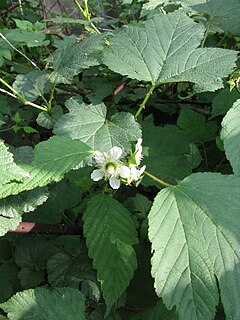
Rubus crataegifolius, also called Korean raspberry, is a species of raspberry native to East Asia.

Rubus rosifolius,, also known as roseleaf bramble, Mauritius raspberry, thimbleberryVanuatu raspberry and bramble of the Cape is a prickly subshrub native to rainforest and tall open forest of the Himalayas, East Asia, and eastern Australia.
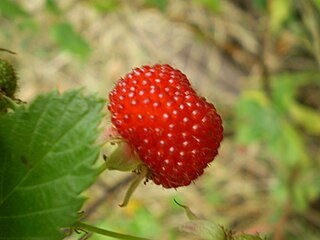
Rubus probus, or Atherton raspberry, is a wild tropical raspberry species native to Papua New Guinea and Australia.
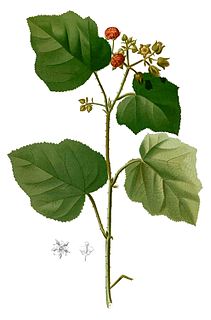
Rubus moluccanus, the Molucca bramble or broad-leaf bramble, is a scrambling shrub or climber, native to moist eucalyptus forest and rainforest of eastern Australia, distributed from Queensland to Victoria and North-East Indian states of Assam, Meghalaya, Nagaland and Arunachal Pradesh. Molucca bramble leaves are simple with 3-5 lobes, 2–15 cm long, and 3–10 cm wide, and the lower surface tomentose. Flowers pinkish red or white. Red fruit is 1.2 cm wide.

Rubus parvifolius, called Japanese bramble, or Australian raspberry in the United States or native raspberry in Australia is a species of plants in the rose family. It is a scrambling shrub native to eastern Asia and Australia. It has also become naturalized in a few scattered locations in the United States.

Rubus coreanus, known as bokbunja, Korean blackberry, or Korean bramble, is a species of raspberry native to Korea, Japan, and China. It produces edible berries that are fermented into bokbunja ju, a Korean fruit wine.
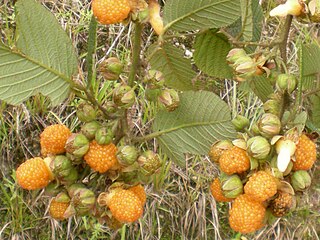
Rubus ellipticus, commonly known as golden Himalayan raspberry or as yellow Himalayan raspberry, is an Asian species of thorny fruiting shrub in the rose family.

Lambertianin C is an ellagitannin.

Sanguiin H-6 is an ellagitannin.


